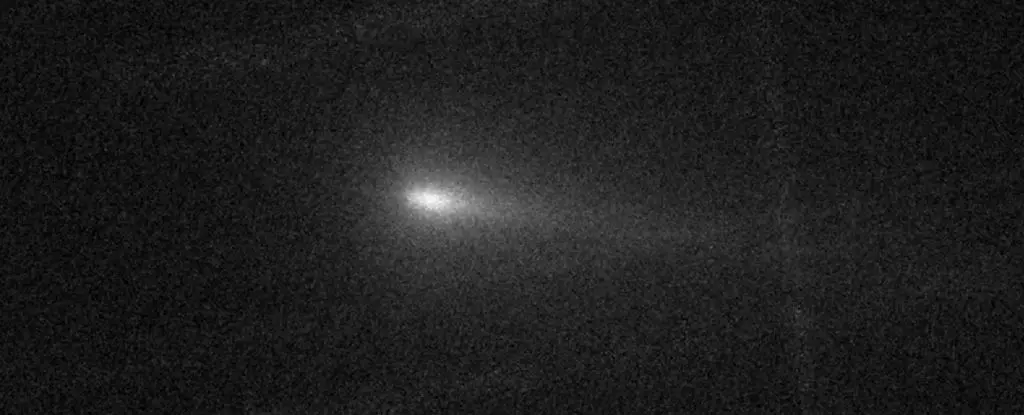The astronomical community has recently turned its gaze towards a comet known as C/2024 S1, which was initially celebrated for its potential to become a dazzling sight in our night skies, particularly around Halloween. However, this cheerful anticipation has turned into a perplexing spectacle of disintegration. As we delve into the details surrounding this comet, a better understanding emerges not just of its fate, but also of the broader implications for cometary science.
The Discovery and Initial Promises of C/2024 S1
Discovered on September 27, 2023, C/2024 S1 belongs to the Kreutz group of sungrazing comets, renowned for their spectacular appearances as they approach the Sun. The comet was predicted to make its closest encounter with the Sun—at a distance of about 1.2 million kilometers (750,000 miles)—on October 28, 2024. The excitement stemmed from the belief that, if it survived its solar passage, C/2024 S1 could become brighter than Venus, possibly even visible during the day. This kind of spectacle has historically drawn public attention and stargazers worldwide.
However, just weeks after its discovery, signs of turmoil emerged. Despite its initial brightening—an encouraging indicator often associated with fiery comets—amateur astronomers subsequently reported waning visibility. Images taken during October revealed that the comet’s nucleus appeared to shrink, raising alarms among astronomers about the potential for disintegration.
Cometary bodies like C/2024 S1 are largely composed of ice, dust, and various volatile compounds, making them unstable as they approach the Sun. The phenomenon we’re witnessing with C/2024 S1 isn’t entirely uncommon; comets of its kind often showcase dramatic changes in brightness and structure due to intense thermal and gravitational forces.
One significant aspect to consider is the outburst activity—periodic releases of gas and dust that can enhance a comet’s brightness temporarily. This behavior often indicates underlying instability within the nucleus. As witnessed with C/2024 S1, such events may culminate in catastrophic fragmentation, leading to a comet breaking apart entirely before making its closest approach to the Sun.
This process can occur rapidly, often exacerbated by sublimation—the transition of ice directly into gas as it absorbs solar heat. When this occurs, it can accelerate the comet’s rotation, generating forces strong enough to rip apart its core. A historical case to note is Comet C/2019 Y4, which shattered spectacularly as it neared the Sun, providing scientists invaluable data on the mechanics behind comet disintegration.
Despite the rising sense of doom around C/2024 S1, there remains a flicker of hope. Observations from October 20 and 22 by Czech astronomer Martin Mašek indicated that the comet’s nucleus had dimmed considerably and was no longer visible. However, it’s not all gloom; it is entirely possible that remnants of the nucleus could survive, and fragments may continue on their trajectory toward the Sun.
The broader cosmic significance of C/2024 S1 is noteworthy. This comet is thought to be a fragment of a more massive body—the Great Comet of 1106 CE—reminding us of the dynamic and ever-evolving state of our solar neighborhood. All Kreutz comets share a similar lineage, suggesting that even if C/2024 S1 meets its demise, the legacy of the Great Comet continues.
For observers in the Southern Hemisphere, the comet might still be faintly visible with binoculars or a small telescope, leading to moments of excitement despite its changing luminosity. As we anticipate its perihelion, the real mystery lies in whether we will witness a bright, distinct tail illuminating the night sky, even in the absence of a visible nucleus.
A Lesson in Astronomical Observation
As C/2024 S1 potentially fades from our sight, it serves as a reminder of the transient beauty of celestial objects and our place in the cosmos. The excitement surrounding its discovery teaches us about the unpredictable nature of comets and the need for continual observation and analysis. Each comet carries a story—from its origins in the icy depths of the solar system to its often rocky encounters with the Sun.
While the anticipated spectacle of C/2024 S1 may not materialize as initially hoped, the lesson is clear: the universe often has its own plans, and our role as observers is to adapt and continue our exploration, embracing both victories and disappointments alike. Happy stargazing!

